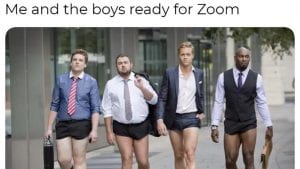Just when we’ve all barely managed to adjust to this new normal, we are mentally preparing ourselves to get back to some of our old ways. With vaccinations happening all around the world, we have plenty of reason, and hope, to start preparing to re-enter society.
As much as the internet has kept us laughing during these trying times, we are all looking forward to the day where we won’t have to sport a mask. While in-person activities will resume, they will not be without rules and regulations. Even now, as people are getting vaccinated, SOPs continue to be in place. This is because we are still trying to determine how long the vaccines will protect people.
It’s safe to assume that many of us have grown used to working from home, not meeting up with others, and sanitizing our hands (after everything we do). Only one of these things should be held on to in a post-pandemic world. No points for guessing which one.
Jokes aside, it will be strange to once again be in public spaces. The concept of shaking hands and hugging is already in somewhat alien territory. Let’s not even talk about kids who have grown up during this time; they think wearing a mask has always been the norm.
Complain all you must about those never-ending video calls, but the fact is that if it weren’t for them, we would have had zero contact with the outside world. While we’re still on the topic, apparently 30% of us don’t even bother changing into professional attire to take these calls. Don’t Zoom in too close!

Photo of four men dressed in professional shirts but just undergarments on the bottom half of their bodies. It says “Me and the boys ready for Zoom.”
On a more serious note, even the economy seems to have acclimated to the pandemic. One company, in particular, has managed to secure a place in the history books during this unprecedented time. Zoom has been the go-to for all things work-, birthday-, and anniversary-related.
Interestingly, this piece from Colin Lankshear bears testament to the same. Talking about the features of what he calls a ‘new capitalism’, there is one aspect that stands out in particular.
He says, “sources of productivity depend increasingly on the application of science and technology and the quality of information and management in the production process.”
He goes on to state that the greatest innovations during the past thirty years have led the way for improved productivity.
The kicker, if you’d like to know, is that Lankshear wrote this in 1997.
What we can infer from this is that if the economy was so reliant on technology back then, we can only imagine what that means in the present. Two main things to factor in are:
- Technology has come a long way since 1997, and
- The pandemic has only fueled our dependence on it.
Pandemic or no pandemic, the world was already in the grips of technology. The past year of working and surviving under lockdown has proven that productivity has not only been stable, it has even risen in some cases.
More importantly, this leads us to understand the importance of communication. No matter what the situation, the exchange of information is what will keep us, and the world, going. Ultimately, it is the one thing that will, without a doubt, shape the future.


